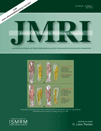
JOURNAL OF MAGNETIC RESONANCE IMAGING
Scope & Guideline
Exploring Innovative Approaches in Radiology and Imaging.
Introduction
Aims and Scopes
- Clinical Applications of MRI:
Research articles often explore the use of MRI in diagnosing and monitoring various medical conditions, including cancer, cardiovascular diseases, neurological disorders, and musculoskeletal pathologies. - Advanced Imaging Techniques:
The journal highlights studies that develop and validate new MRI techniques, such as diffusion-weighted imaging, dynamic contrast-enhanced imaging, and quantitative MRI approaches. - Radiomics and Machine Learning:
A significant focus is on the intersection of MRI with radiomics and machine learning, emphasizing the extraction of quantitative features from MRI data to improve diagnostic accuracy and prognostic modeling. - Quantitative and Functional MRI:
Many articles contribute to the understanding of functional MRI and quantitative measures, investigating aspects such as blood flow, perfusion, and tissue characterization. - Technical Innovations:
The journal includes research on technological advancements in MRI, including hardware improvements, imaging protocols, and post-processing techniques that enhance image quality and diagnostic capabilities.
Trending and Emerging
- AI and Machine Learning Applications:
There is a significant increase in research utilizing artificial intelligence and machine learning techniques to enhance MRI analysis, improve diagnostic accuracy, and automate image segmentation. - Quantitative Imaging Biomarkers:
Emerging studies focus on the development of quantitative imaging biomarkers derived from MRI data, aimed at providing objective measures for disease characterization and treatment response. - Integration of Multi-Modal Imaging:
Research is trending towards the integration of MRI with other imaging modalities, such as PET/CT, to provide a comprehensive assessment of various conditions and improve patient management. - Personalized Medicine Approaches:
A growing number of articles are exploring personalized medicine approaches in MRI, tailoring imaging protocols and interpretations based on individual patient characteristics and disease profiles. - Functional MRI for Neurological Disorders:
There is an increasing emphasis on the use of functional MRI techniques to study neurological disorders, including applications in understanding brain connectivity and functional changes associated with various conditions.
Declining or Waning
- Traditional Imaging Techniques:
There has been a noticeable decline in studies focusing solely on conventional MRI techniques without the integration of advanced methodologies such as diffusion-weighted imaging or dynamic contrast-enhanced imaging. - Basic MRI Physics Studies:
Research articles centered around basic MRI physics principles and theoretical discussions have decreased, as the focus has shifted towards clinical applications and advanced imaging techniques. - Single-Center Studies:
There is a waning interest in single-center studies, as researchers increasingly prefer multicenter collaborations that enhance the generalizability and robustness of findings.
Similar Journals

MAGNETIC RESONANCE MATERIALS IN PHYSICS BIOLOGY AND MEDICINE
Connecting Science and Medicine Through Magnetic ResonanceMAGNETIC RESONANCE MATERIALS IN PHYSICS BIOLOGY AND MEDICINE, published by SPRINGER, is a premier academic journal dedicated to advancing the fields of biophysics, radiology, and medical imaging. With a strong presence in Germany and an international readership, this journal has established itself as a vital resource for researchers and professionals engaged in the interdisciplinary study of magnetic resonance applications. Featuring a commendable 2023 impact factor and categorized in Q2 quartiles across several domains—including Biophysics and Radiological Technologies—this journal provides a platform for innovative research and practical implementations in the field. Although it does not follow an Open Access model, it offers extensive archives dating back to 1984, affirming its long-standing commitment to scholarly excellence. The journal not only ranks impressively within Scopus metrics, but it also promotes ongoing discourse that bridges gaps between physics, biology, and medicine, making it an essential read for professionals and students aiming to stay informed about cutting-edge developments.
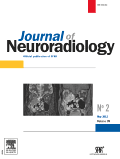
JOURNAL OF NEURORADIOLOGY
Empowering professionals with cutting-edge research.JOURNAL OF NEURORADIOLOGY is a leading peer-reviewed journal dedicated to advancing the field of neuroradiology. Published by MASSON EDITEUR, and based in France, this journal serves as a vital resource for professionals and researchers focusing on clinical neurology and various imaging technologies. With an impressive impact factor reflective of its robust contribution to the literature—ranking in the Q2 quartile across categories such as Neurology (clinical), Radiological and Ultrasound Technology, and Radiology, Nuclear Medicine and Imaging—the journal is positioned prominently within its field. Researchers can access the journal through subscription options, providing valuable insights into the latest developments, techniques, and empirical studies that shape neuroradiological practices. With its inception dating back to 1974 and coverage extending to current advancements, JOURNAL OF NEURORADIOLOGY is crucial for fostering knowledge and innovation, making it indispensable for both seasoned experts and emerging scholars alike.
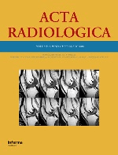
ACTA RADIOLOGICA
Unveiling New Perspectives in Radiological AdvancementsACTA RADIOLOGICA, published by SAGE Publications Ltd, is a premier journal dedicated to the evolving field of radiology, bridging the gap between clinical practice and research from its inception in 1921 to its anticipated continuation until 2024. With an ISSN of 0284-1851 and an E-ISSN of 1600-0455, this esteemed journal holds a significant position in the academic landscape, reflected in its 2023 rankings as Q3 in several categories, including Medicine (miscellaneous), Radiological and Ultrasound Technology, and Radiology, Nuclear Medicine and Imaging. Although currently not an open-access journal, ACTA RADIOLOGICA offers robust subscription options allowing a wide readership among researchers, healthcare professionals, and students striving to stay at the forefront of radiological advancements. The journal publishes original research, reviews, and clinical studies that contribute to the understanding and application of imaging technologies, underscoring its vital role in shaping modern medical practices.
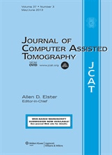
JOURNAL OF COMPUTER ASSISTED TOMOGRAPHY
Illuminating the Path to Advanced Diagnostic TechniquesJOURNAL OF COMPUTER ASSISTED TOMOGRAPHY, published by Lippincott Williams & Wilkins, stands as a vital resource in the field of Radiology, Nuclear Medicine, and Imaging. Since its inception in 1977, this journal has been dedicated to advancing the understanding and application of computer-assisted tomography, emphasizing innovative research and clinical practices that enhance diagnostic imaging techniques. With an impact factor reflective of its rigorous scholarship and relevance—ranking in the Q3 category—the journal serves as an essential platform for contributors and readers alike, navigating the challenges and opportunities within a rapidly evolving field. Researchers, professionals, and students are encouraged to engage with the rich repository of articles that cover emerging technologies, clinical applications, and theoretical advancements, collectively fostering a deeper comprehension of imaging sciences. Although not currently designated as an open-access journal, it continues to enhance discourse in the community from its headquarters in Philadelphia, PA, maintaining a commitment to the highest standards of academic excellence.

Chinese Journal of Academic Radiology
Unveiling Cutting-edge Research in Radiology and Nuclear MedicineChinese Journal of Academic Radiology is a leading publication in the field of Radiology, Nuclear Medicine, and Imaging, published by SpringerNature. With an ISSN of 2520-8985 and E-ISSN 2520-8993, the journal aims to bridge the gap between academic research and practical application in radiological sciences. Recognized for its contributions to the advancement of imaging technology and patient care, it currently holds a Q3 quartile ranking for 2023. The journal has a commitment to sharing innovative research findings that address pressing challenges in the field, thereby fostering collaboration and knowledge exchange among researchers, professionals, and students. Although it does not currently offer open access options, the journal's comprehensive reviews and high-quality research articles present a significant resource for those seeking to deepen their understanding of radiological practices and innovations. The Chinese Journal of Academic Radiology continues to play a vital role in shaping the future of radiological science through rigorous scholarship and global discourse.
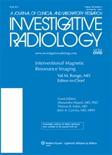
INVESTIGATIVE RADIOLOGY
Elevating Standards in Investigative RadiologyINVESTIGATIVE RADIOLOGY, published by Lippincott Williams & Wilkins, is a premier peer-reviewed journal dedicated to disseminating innovative research in the fields of radiology, nuclear medicine, and imaging. With a notable impact factor underscored by its impressive ranking—10th out of 333 in its category, positioning it within the 97th percentile—this journal serves as a vital resource for researchers, professionals, and students eager to stay at the forefront of advancements from 1966 to 2024. Although it does not offer open access, the high-quality studies and reviews found within its pages contribute significantly to the understanding and application of modern imaging techniques. Recognized for its Q1 status in both miscellaneous medicine and radiology specializations, INVESTIGATIVE RADIOLOGY continues to play an essential role in shaping the future of diagnostic and therapeutic imaging.

NEUROIMAGING CLINICS OF NORTH AMERICA
Charting New Territories in Clinical NeuroimagingNEUROIMAGING CLINICS OF NORTH AMERICA is a premier peer-reviewed journal published by W B SAUNDERS CO-ELSEVIER INC, focusing on the evolving field of neuroimaging and its applications in clinical practice. Established in 1993, this journal has become a pivotal resource for researchers, professionals, and students alike, providing in-depth articles, reviews, and case studies that address both cutting-edge advancements and standard practices in neuroimaging. With its impressive credentials, ranking in the top quartiles of various medical categories—including Q2 in Medicine (Miscellaneous) and Q2 in Radiology, Nuclear Medicine, and Imaging—the journal is vital for advancing knowledge and clinical applications in the disciplines of neurology and radiology. Although it does not offer open access, the journal maintains a robust reputation with a broad readership, embodying a commitment to excellence in medical literature. The ISSN number is 1052-5149 and the E-ISSN number is 1557-9867, ensuring the accessibility and dissemination of high-quality neuroimaging research.
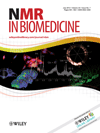
NMR IN BIOMEDICINE
Bridging NMR Techniques with Clinical ExcellenceNMR in Biomedicine is a prestigious journal published by Wiley that has been at the forefront of advancing research in the integration of Nuclear Magnetic Resonance (NMR) techniques within the realms of biomedicine since its establishment in 1988. With its ISSN 0952-3480 and E-ISSN 1099-1492, this journal focuses on the application of NMR across various scientific disciplines, including Molecular Medicine, Radiology, Nuclear Medicine and Imaging, and Spectroscopy. The journal is classified in the Q1 and Q2 quartiles as of 2023, showcasing its significant impact and contribution, particularly in Radiology and Spectroscopy, where it ranks in the top tier of its fields. The Scopus ranks reflect its esteemed position, with notable placements such as #70/333 in Radiology and #25/76 in Chemistry Spectroscopy. While Open Access options are not available, the journal remains committed to providing high-quality, peer-reviewed research that fosters innovation and collaboration within the scientific community. Researchers, professionals, and students are encouraged to explore the cutting-edge findings presented in this journal, as it continues to shape the future of biomedical applications of NMR.

Egyptian Journal of Radiology and Nuclear Medicine
Innovating Insights for Global HealthcareThe Egyptian Journal of Radiology and Nuclear Medicine, published by Springer, is a premier open access journal that has provided valuable insights and advancements in the fields of radiology and nuclear medicine since its initiation in 2010. With an E-ISSN of 2090-4762, this journal is dedicated to bridging the gap between research and clinical practice, allowing for the dissemination of high-quality research to a global audience. Situated in Germany, it enjoys a robust reputation in the academic community, evidenced by its categorization in the Q3 quartile for 2023, as well as its Scopus ranking, where it holds a position of #225 out of 333 in the domain of Radiology, Nuclear Medicine and Imaging, placing it in the 32nd percentile. The journal's open access model ensures that researchers, professionals, and students can freely access innovative studies, reviews, and case reports that discuss the latest methodologies, technological advancements, and clinical outcomes in radiology and nuclear medicine. As it looks toward its converged years spanning from 2010 to 2024, the Egyptian Journal of Radiology and Nuclear Medicine continues to be an essential resource for advancing knowledge and fostering ongoing collaboration in these critical fields.

JACC-Cardiovascular Imaging
Empowering Clinicians with Cutting-Edge KnowledgeJACC-Cardiovascular Imaging, published by Elsevier Science Inc, is a premier journal that focuses on the rapidly evolving field of cardiovascular imaging, providing a vital platform for the dissemination of high-quality research and clinical studies. With an impressive impact factor and ranking within the top tier of cardiology and radiology specialties, the journal is recognized for its commitment to advancing knowledge in diagnostic imaging techniques, including echocardiography, MRI, and CT in cardiovascular contexts. Since its inception in 2008 and converging through 2024, JACC-Cardiovascular Imaging has maintained a distinguished position, currently ranking Q1 both in Cardiology and Cardiovascular Medicine as well as in Radiology, Nuclear Medicine and Imaging. This ensures its relevance and influence, as evidenced by its Scopus rankings—ranked #2 in Radiology and #8 in Cardiology, placing it in the top echelons of scholarly output. Although it does not offer open access, the journal's content is crucial for researchers, clinicians, and students who seek to remain at the forefront of cardiovascular imaging advancements.